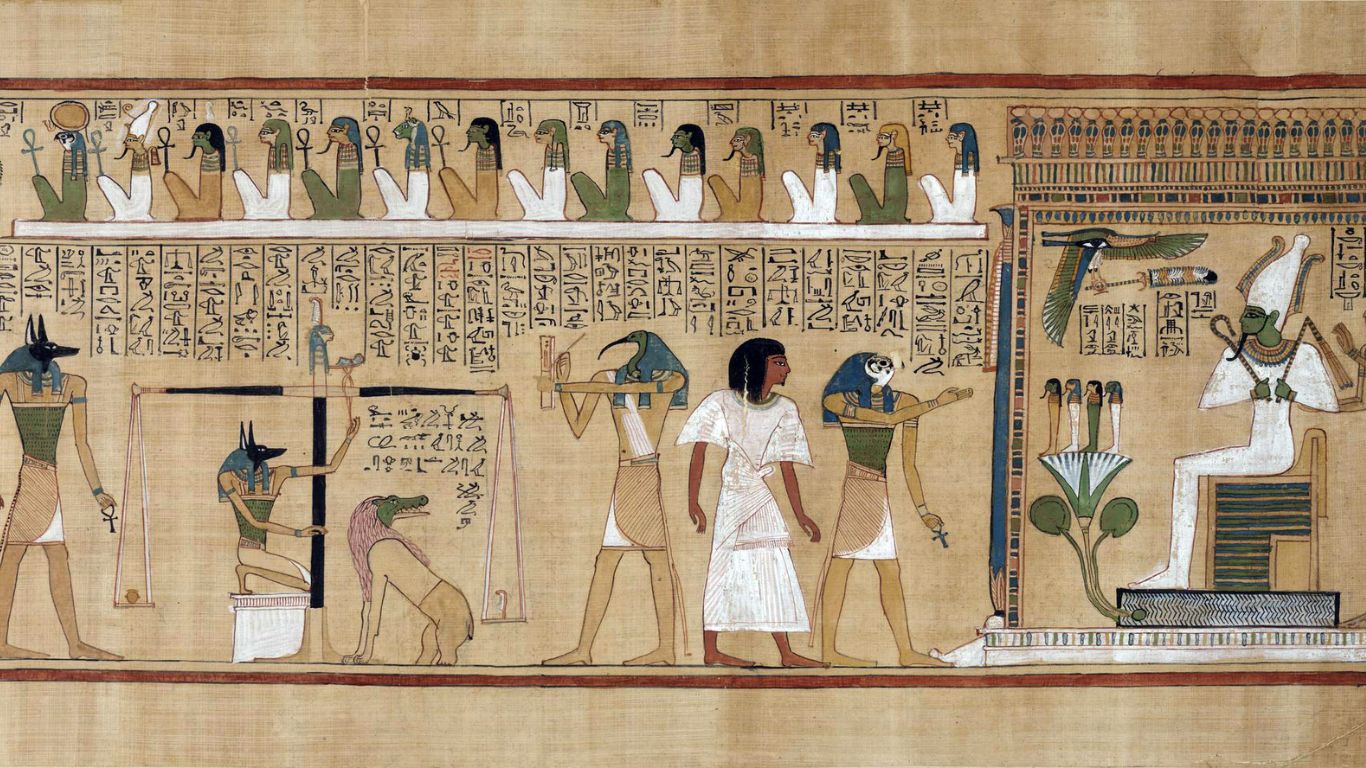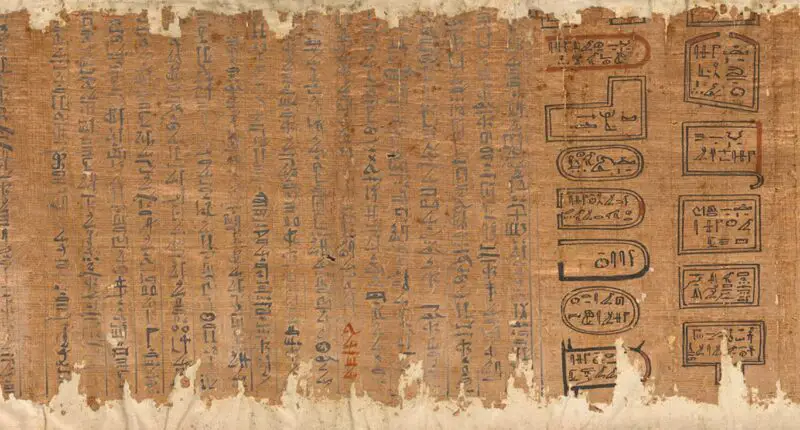The Egyptian myth of the Book of the Dead and the Journey to the Afterlife : Throughout history, death has been a universal experience that has captivated and puzzled the human mind. From the earliest civilizations in Mesopotamia and the Indus Valley, to the Mayans and Ancient Egyptians, humans have grappled with the question of what comes after death. In ancient Egypt, the belief in the afterlife was so complex that a literature surrounding it was created, which is now known as the Book of the Dead. Stories of mummies, curses, pharaohs, and pyramids have captured the imagination of people for centuries and continue to be a source of fascination and intrigue to this day.
Meaning Death in The Egyptian Myths
Contrary to popular belief, the ancient Egyptians did not have an obsession with death. In fact, scholars have found evidence that they valued life and loved their land. While other ancient cultures saw death as a chance to go to a different, faraway place, the ancient Egyptians viewed the afterlife as a reflection of life on earth. They believed that their country was the most blessed land and that the afterlife would be similar, but without the difficulties of earthly life. The ancient Egyptians celebrated life through festivals and games and appreciated their families, homes, and pets. It is important to keep this in mind when exploring the complexities of the afterlife as depicted in the Book of the Dead.

For the ancient Egyptians, death was not an end but a transition from one life to the next. They believed that death opened the door to the possibility of eternal happiness, and so they strove to live a life that was worthy of being reflected in the afterlife. However, the journey to the afterlife was not easy and was filled with complications and tests that challenged one’s worthiness to reach paradise.
According to ancient Egyptian belief, when someone died, their soul was trapped inside their body because it had been in their physical vessel for so long. The ancient Egyptians were afraid of the possibility of the soul becoming lost, so they compiled a series of texts to guide it to the afterlife and ensure its safe journey. These texts, which included spells and images depicting the journey to the afterlife, were kept in the tombs of the deceased and were known as the Book of Coming Forth by Day, or the Book of the Dead.

Despite its name, the Book of the Dead was not always a physical book with pages. The first chapters were originally recorded in tombs and on the walls of pyramids, and were known as Coffin Texts and Pyramid Texts. It was only later that the ancient Egyptians began requesting books made of papyrus. The Egyptian Book of the Dead is not the same as the Bible, but rather a collection of spells that the ancient Egyptians believed were necessary for the journey to the afterlife. Each copy of the Book of the Dead was carefully tailored to the individual and contained spells that were believed to protect the deceased and help them navigate the challenges of the underworld.
Spells in The Book of the Dead
The Book of the Dead contained a variety of spells that the ancient Egyptians believed were necessary for a safe journey to the afterlife. Some of these spells were meant to protect the deceased from dangers such as crocodiles or cockroaches, while others were intended to keep the darkness at bay or to reunite the soul with the body. One of the most well-known spells in the Book of the Dead is Spell 125, which describes the judgment of the deceased’s heart by the god Osiris. This spell was included in every copy of the Book of the Dead and has been depicted in various forms of popular culture, including the Marvel TV series Moon Knight.

According to the Book of the Dead, the soul of the deceased would encounter the jackal-headed god Anubis, who would guide them from their tomb to the Hall of Truth. There, the soul would wait for their judgment and be taken by Anubis to face Osiris, god of the deceased, and Thoth, god of writing and wisdom. The soul would then make the Negative Confessions, a list of forty-two sins that they had to truthfully deny committing. These sins included crimes such as theft, murder, adultery, and even causing harm without reason. The ancient Egyptians believed that these sins could disrupt the peaceful order of society and therefore had to be avoided in order to be worthy of reaching the afterlife.
After the Negative Confessions, the gods and judges would discuss them and, if satisfied, the deceased would present their heart to be weighed. Osiris would place the heart on the golden scales and compare its weight to the white feather of Ma’at, the symbol of truth. If the heart was lighter than the feather, the person was allowed to move on to the next phase of the journey. However, if the heart was heavier than the feather, it would be thrown on the floor and eaten by Ammut, the Devourer of the Dead. This “Great Death” would erase the existence of the deceased and was the worst possible outcome in ancient Egyptian mythology. There is no concept of hell in ancient Egyptian religion.

If the deceased passes the Weighting of the Heart, they will move on to the Lily Lake or the Lake of Flowers. Depending on the version of the myth, the soul may face dangers or simply take a peaceful walk at the shore. There, they will encounter Hraf-hef, the Divine Ferryman, also known as He-Who-Looks-Behind-Him. This deity will be unpleasant and rude, and the soul will have to prove their worth once again in order to pass this final test. If they succeed, the soul will finally reach the Field of Reeds, the Egyptian equivalent of paradise. In this afterlife, the soul will find their home as it was before death, with all their favorite possessions and deceased loved ones, including family, friends, and pets. They will live in happiness and contentment for all eternity.
Contrary to popular perception, the ancient Egyptians were a civilization that celebrated life and their homeland. They saw death as a transition to another life, rather than an end, and believed that the afterlife was a reflection of their earthly life. However, reaching this afterlife involved a perilous journey filled with challenges and encounters with powerful deities, all to ensure that their earthly lives were worthy of continuation in the afterlife. While many aspects of ancient Egyptian culture have become associated with death in popular culture, the truth is that the ancient Egyptians valued life and their homeland highly.
Also Read : 10 Most Prominent Egyptian Gods and Goddesses



